Cinema and Spirituality
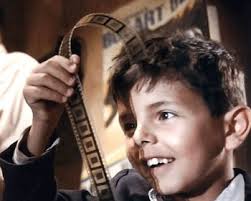
Orientation Guide
Introduction
In the preparation of this guide, the claims of being an indication of what "must be done" are careful. The totality of what has been developed is the result of long experiences over time that in one way or another have yielded results and that we want to offer with the aim of contributing to the communication.Taking the forecasts that are indicated in this step, we understand that assuming the proposed task generates enriching results.
Although the central theme is the cinema, it is necessary to point out that from our perspective, ultimately the most important thing is not to achieve a performance by excellent spectators but to understand that when we work with this art we are going to be involved in a communication process. Both because of what cinema is as a medium and because of the dialogic interactivity that is generated between the actors who participate in the encounters. We grow with words and personal encounters. And in this process we grow in spirituality. Listening, sharing, understanding, guiding, looking together with the other, collectively enlightens us. Achieving it is not as easy as expressing it or proposing it, we are human and our wealth and weaknesses are expressed in our bonds. .
Cinema and Mediation
We like to hear stories.
We enjoy the stories.
And that's what cinema is, stories told, of things that happen to people, just like in real life.
There is a better reason to love the cinema " caf
Stories with characters who experience situations similar to mine or to those of others we know. Some are heroes of everyday situations and others of extraordinary events. Things happen to people in life, like in movies. Many times we comment about certain events that happen to us: you will not believe it! ... something that is from a movie happened to me! It is very common, sometimes without realizing it, with family or friends or also in the workplace, Let's reference or evoke movies to give examples that represent us in the real world. It is more common to comment on a movie we saw than a book we read. It is more common to discuss a story we saw than to critically comment on a text we read. In other words, cinema is involved in our lives more than we are aware of. This cultural substrate that was installed with the development of audiovisual media, generates an immense possibility to work with cinema from perspectives that go beyond legitimate consumption as Entertainment. Watching a movie is almost always a pleasant experience, because it is linked to entertainment and fundamentally to emotion. People like to get excited. He likes to laugh and also cry, although the latter a little less. In front of the cinema we are all spectators, a few, spectators and creators, that is, producers, filmmakers, story-makers but also, before and always, spectators. That is why Approaching cinema to a formative experience is an almost natural process, but as it sounds, it seems to be easy. However, it is not. Cinema is an expression that we can appreciate because it is fundamentally built with a language, which nobody teaches us to decipher and which we can nevertheless read. So this is where we will stop.
Is it possible to watch movies and comment on them without having a specific knowledge of cinema, its language and its history, "or without knowing the symbolic value of its images, or metaphors, etc."
The answer to this obligatory question is the path that this didactic type guide wants to travel. If my purpose as a trainer is to use cinema with effective results, in communicational terms I must take into account some considerations:
1. Be aware that the film with which I am going to work was not conceived by its author (director) for this, my purpose.
2. In this case, the film becomes a tool.
3. That the main objective is not to create a specialist film reader
4. That my role is transformed into being a mediator between the work and its final recipient, that is, the viewer.
Every film speaks for itself, it is not a tool at all. It is a cultural input intended for entertainment without necessarily demanding or ensuring a reflective retribution in terms of thought from the viewer.It becomes a tool when I determine that I am going to use the film for something, that is, for something other than watching it, for example give an opinion in a dialogical exchange with pedagogical purposes It is a tool when my intervention on it contains the purpose of guiding third parties towards a reading, which even with the best intentions and balance is still a directional reading about an act that the viewer should enjoy with total freedom. This, therefore, inhibits me from the possibility, in any case, of drawing deterministic or closed conclusions Especially if I am in front of a work of art.
What does it mean to dialogue with the work
First of all, when watching the film, I must abandon myself to the emotion, the feelings that it provokes in me, then, if we consider the film as a text that contains a meaning, dialogue with the meaning, enter a more rational dimension, that is, penetrate In its plot, go through its formal and symbolic aspects, understand the subject, discover its message. The first thing we would have to understand is that a film, whatever its quality, is a production, a complex, collective construction. And our work of dialogue consists of analyzing that complexity, and this will bring a result according to how I "stand" in front of the work. In some sense, go the other way or deconstruct it. A film can be entered from different views, I can do it from an analysis of the cinematographic genre, compare it within the context of the history of cinema itself, describe its aesthetics, contrast the style of the director with others, etc. The purposes can be to teach cinema within the history of art, of cinema itself, or as an example for those who are going to produce or make films, etc. In the case that concerns us to dialogue with the cinema is to visualize the film with a direction, that direction is going to be guided by what I sense or think is in the film and responds to my ulterior purpose to the vision of it. If I want to talk about the values that the story transmits through the moral actions of its characters, it is there that I will mainly place my gaze. In the same way, regardless of the story, I can dwell in detail on the formal, aesthetic values of the film.
How to walk the road
Attitude and aptitude is what is needed to work with cinema as a tool: commitment and maturity. When we speak of commitment, we refer to what we must assume with the work. In other words, committing myself to the film is seeing it more than once, reading about it, knowing about its director, questioning it, incorporating it into my logic, my feelings, letting it mature in me, taking distance and at the same time becoming intimate with it. It is remarkable how on more than one occasion the film grows in me when time moves away from viewing it. Commitment to the film is the first requirement that the mediator must acquire. This will give you security when you face the meeting with the recipients of the dialogue indicated above. It will put you at an advantage to signal reading initiatives. And it will consolidate the experience with the seriousness that this implies.
The second condition is maturity. When it comes to working on an issue such as values, I have to have clear, mature criteria about them. While it is true that life experience contributes to that maturity, no less true is the need for personal training and the conviction that what I am criticizing, proposing or reflecting on has to be a coherent whole and the product of prior reflection. We will never be sufficiently prepared in terms of absolute mastery of the issues to be discussed, however with commitment and personal maturity we narrow the path of uncertainty and lightness.
CINEMA AND SPIRITUALITY
What are we talking about when we unite in a binomial two concepts that at first glance represent two at least distant dimensions "Cinema is a cultural input installed in the social imaginary as a show conceived for entertainment; and spirituality, a dimension reserved for order of the intimate, sensitive, personal. Can there be a legitimate connection between both concepts? If we recognize in the cinema an aesthetic manifestation and in a more artistic sense, we are taking the first step to legitimize the links. Art has as its final destination the minds and hearts of men, where emotion reverberates. That which moves me that moves me, taking me out of the place where I am installed. In this sense, art, together with religion, can be for man, a vehicle of Redemption. He redeems through his beauty, his truth. But it is not always clear if all the cinema produced is a work of art. Even so, we can recognize in infinity of realizations. those works that come to us in a particular way, either because of the content of their history or because of the treatment given to it.
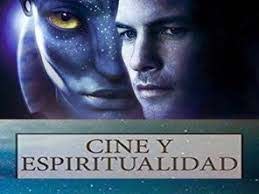
Spirituality in the cinema is present every time that, through their stories, I project or identify with what happens to the characters who suffer deeply human situations that try to resolve conflicts that go through pain, anguish, love, hope, the search for the transcendent, expressed in stories that account for struggles for a social or community good, that build paths to peace, that are victims of the selfishness of others, that are not recognized in their dignity that are discriminated against, persecuted , who are afraid, who risk their lives for others, etc. Sometimes due to the presence of values or even the absence of them and their consequences, the spirituality of man is in question. And it is there where the words emerge as judgment, in response.
In spirituality, it is the human condition that is at stake. And that is the game we have to play. We know that all these questions can be related in the cinema with greater or lesser quality, either because of their form or because of their depth. Therefore, the first challenge we must face has to do with the choice of material. What is proposed below are not fixed and unappealable criteria. Rather, they are the result of experiences carried out over a long time in the field that concerns us.
To reinforce and deepen the topic of cinema and spirituality, we recommend the work carried out by Luis García Orso, Sj in BASIC TRAINING MODULES: didactic material for promoters "
The mediator and his task
What do we choose
The choice of the film is one of the most complex tasks, we can do it by having seen it ourselves, or by recommendation of third parties who share our criteria in terms of film quality. Or we can also do it, as in this case, guided by specialized publications. The first criterion that we must take into account is:
Who (who) is the film aimed at ?, obviously referring to the group with which we are going to work. At this point there are two considerations that we must take into account: my preparation as a mediator and the profile of the group with which I am going to interact
Regarding the first: if we are starting out in practice, we must opt for films whose stories do not contain a narrative and formal complexity, although the theme presented by the film is the most appropriate to our objective. The criteria for this choice are transferable to the group with which I am going to work. If they consume little cinema or the cinema they see are light commercial products, they will have to choose to start with films that are closer to their daily cultural inputs and gradually rise to deeper works. There are good films with spectacular productions, especially in the current sagas that refloat in their stories the classic dilemmas of the struggle of good and evil.
Another criterion to take into account is, how long will I be working with the same group. If the possibility is to do it over a period of time, at least five encounters, we can grow in narrative complexity and thematic deepening.Once we have achieved a committed audience and regular presence with the encounters, we can deepen into works that reach more complex reflective levels.
How to watch a movie
The mediator, as we said above, must ensure mastery over the audiovisual material with which he is going to work. It is advisable to watch the film three times, the first time, almost with a naive look. Abandon yourself to the work, enjoy it. Let the film penetrate my feelings, my emotion. The second visualization already has to its credit, knowing what the story is about. The look will be able to be more distant. In a sense, more objective.
This second observation should be made by taking notes with a remote control in hand. Make a note of everything that catches my attention, perhaps already detected at first sight. Stop the image if necessary. Copy sentences of the characters that I understand can be important, that reflect a thought, a principle, an idea. Something that defines the character in his worldview of the world or the situation he has to face. In other words, we would be highlighting a part of the script.
The third visualization serves to corroborate the task carried out in the two previous steps. With the analytical elements adjusted, I must make the decision if this is the most suitable material for the group with which I am going to work. At this point it may be thought that three previews are not necessary to make such a decision. However, there are many films that, if you go through them carefully, reveal a history and a richer formal treatment than what appears in the first instance. However, those who have already acquired experience in the activity, one look will be enough to make the decision.
How to interact with the audience
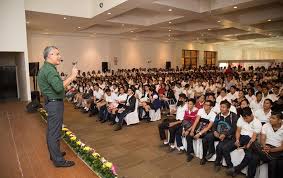
It is best to have prior knowledge of the target group of the experience. This situation, which could be considered the most natural and logical, however, does not always occur. This is the case when we are invited to meet for the first time with a group with which we have never had contact and it is very heterogeneous in its composition and interests. In this case, the important thing is to make sure of who they are, their ages, whether or not they have experience of having worked with the cinema, where they come from, concerns, etc. This information should be provided to us by the person calling us. Having knowledge of the situation, we could demand cuts in the number of audiences, ages, points of interest, etc. If we are going to work with young people and adolescents, it is not advisable for the groups to be massive and if they are for reasons that we cannot handle, we must face the task dividing the audience into groups that do not exceed ten people.
The use of time
If we want to do the task well, it is necessary to have adequate time for the different stages The first stage in front of the group is the presentation, briefly pointing out what the meaning of the meeting is, prior to my personal presentation that it is convenient to make a third The second is a very brief presentation of what we are going to see. This has an orientation sense, with the idea of preparing the audience. Here we could suggest paying attention to certain aspects of the film that I consider to be key. But no more than that. Then we can anticipate, without further details, how we are going to work on the film once the projection is finished. This entire period has to be short, we must not liquefy the expectation of seeing the film and add more time to the meeting than is convenient.
The second step must take into account the most important: the mediator must be present during the entire projection of the film, even if he feels that he has it well incorporated. This presence will be indicating: What we are doing is important, it interests me as much as it does But also being present during the total exhibition of the film transforms, for the mediator, into a valuable moment. Located in the audience can detect reactions, comments and emotions. Faced with these situations, the mediator must take account of the passages of history that generated these behaviors in the viewer, and then promote them in open dialogue. This will lead us to think because when faced with certain situations where silence is expected, laughter breaks out, or certain scenes arouse comments in a low voice. Indirectly this instance can generate an indication about the maturity of the group in front of the film. It is natural for adolescents to feel inhibited in front of their peers, to recognize that in this or that part of the story they were moved with tears. It will be easier to comment on everything that has caused them humor. But my mediator attitude of having listened to the spectators can guide me more precisely in the later task.
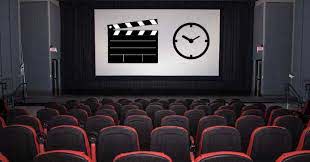
After the screening, which almost always takes two hours on average, it is advisable to pause as briefly as possible. This will avoid future desertions to go to the bathroom, or any other need. A very long relaxation time is not advisable, even if circumstances allow it, it is advisable to avoid it. Notwithstanding the above, we must take into account the characteristics of the film that we have projected. story that is hard, difficult, slow, or that strongly impacts the audience's mood causing, anguish, sadness or anxiety; deserves, needs, relaxation, oxygenation. The coordinator's common sense will know how to handle the times differently.
In any case, what we point out is that the time factor that mediates between the end of the projection and the beginning of the interaction through the ongoing dialogue, must be managed consciously. At this point, it is obviously not the same to work with children, youth or adults. The next step is a kind of general countenance, the best way to provoke the beginning of a dialogue is to ask if they liked the film or not. This apparently simple question can give us an overview of the audience's mood . Then we could continue with the question: which scene reached them the most, "what did they like the least?" These questions will give me a general overview of the feelings that the story provoked in general. The next step is to order the reading from a point of view From an analytical point of view, it is convenient for each opinion or assertion by the audience to ask the "why" At this stage we will be able to notice what is the vision that is expressed about certain values that may be present in the story. It is not strange to discover that certain judgments or opinions do not agree with a vision like ours, that of the mediator, even many times they can even be opposite. Young people often justify actions that are not justifiable or at least questionable.
The mediator as facilitator:
The mediator's expertise will be to provoke a debate about that position by seeking allies in the audience to balance opinions. At this point we must avoid a stagnation in the confrontation of ideas, what is important is that the opinions are plural, there are nuances, divergences, complementarity, let's not forget that we are all talking with the film and as a mediator, I guide, I provoke glances, I stimulate criticality. The mere fact of installing the theme of spirituality and that young people recognize human attitudes that connect them with that dimension, we will be winning in the proposed objectives. The most important thing in these meetings is to leave the audience thinking and perceiving that rich and varied thoughts emerge in an organized and respectful dialogue.
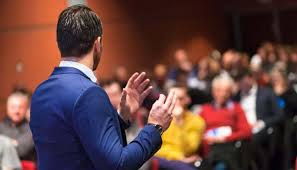
We must not become obsessed with wishing that the conclusions reached are totally coincident with mine, those of the mediator. The mediator is not the owner of the work, he is a guide towards it. We must not forget that we are not teaching dogma, that the important thing is the encounter, the dialogical participation, the connection with the spiritual from an audiovisual story. Cinema does not exhaust all the instances of formation, although we recognize in it an important contribution to the process of the same. it is convenient to do an ordering of the interacted. In this instance, the lucidity of the mediator is important. You should be able to represent the different voices expressed and express an opinion that gives an enlightening closure. A good experience in this sense opens the possibility of future encounters.
Some tips for working in plenary
You must show security in front of the public with whom you are going to talk
You must avoid becoming a showman. Although a dynamic and precise presence contributes to the fluidity of the meeting.
It must be clear in the work instructions, if it is necessary to repeat them and make sure they were understood.
You should avoid generating an erudite image, but you should avoid knowing the management of the activity and its approach to the work.
You must be very attentive to those who ask for intervention and even more attentive to faces or gestures that suggest wanting to say something and do not dare to ask explicitly.
Avoid concentrating the interventions on a few individuals or on some "star" participant, or personal confrontation between participants
You should try to clarify when there are dark or ambiguous readings.
It must provoke, without forcing, participation in those most reluctant to intervene.
You must be aware of the time that passes.
You must be careful not to ridicule weak, unclear, or poorly argumentative statements.
You should avoid imposing your own gaze, although it should guide you to the thought of what we have developed as mediators.
Be patient with those who find it difficult to argue, but at the same time contribute to building a closure of it.
If the film has an open ending, balance interpretation possibilities
Reading perspectives
So far, we have offered a way to approach a film. However, there are other possibilities of appreciating gazes that we should not ignore. When we are in front of an audiovisual story such as cinema, we are in front of a language that has its own codes threaded with image and sound. Cinema has its own own laws, and it is convenient, if we are working with it from the perspective already enunciated, to know them, to become familiar with them.
The following proposal aims to educate the gaze in the cinematographic discourse, to detect its components. In short, to become familiar with and recognize in the story what constitutes it. Every occasion of meeting with the cinema should help us to become literate in audiovisual discourse. And this is achieved by also attending to its formal aspects. Learning to watch movies is also learning to watch television, learn to read a newspaper and even listen to the radio. How is this possible?
Educating a critical look in any discourse opens the viewer to recognize the complexity that a story contains, to discover its ideological dimension and to detect stereotypes. It is of little use to recognize the contents of spirituality that are present in a film if at the same time I am not aware of how the formal elements that are in the construction of that story play, let's think a little about the ideological dimension, which here we do not understand as only of political character, but mainly from the worldview that the author has about life, man, history, God, etc. By the way, always present in one way or another in the films.
We provide here, for the mediator, a conceptual orientation to enter the story through the characters, in my opinion the most appropriate to work in film and spirituality, since they are the ones who support the decisions, their behaviors, their moral actions

The character as a person
"The narrated plots are always, basically, plots" of someone ", events and actions related to someone who, as we have seen, has a name, an importance, an incidence and enjoys particular attention: in a word, a" character".
Now, clearly and synthetically determining what it consists of and what ultimately characterizes a "character", beyond its points of friction with the environment, is quite difficult. We prefer, therefore, not to seek a unambiguous answer and rather resort to two possible perspectives, two different categorical axes, with which to face the analysis of these narrative components. Let us then consider the character first of all as a person and then as a role.
Analyzing the character as a person means assuming him as an individual endowed with an intellectual, emotional and attitudinal profile, as well as with his own range of behaviors, reactions, gestures, etc. What matters is to convert the character into something tendentially real: whether you want to consider it above all as a «psychological unit», whether you want to treat it as a «unit of action», what characterizes it is the fact that it constitutes a perfect simulation of what we are faced with in life
According to this perspective we can differentiate distinctions such as these: flat character and round character: simple and one-dimensional the first; complex and varied the second
linear character and contrasted character: uniform and well calibrated the first; unstable and contradictory "static character and dynamic character: stable and constant the first; constantly evolving the second
Naturally, more specific categories can then be formulated, distinguishing between those that refer to character (that is, to a "way of being," the character as a psychological unit), and those that refer to gesture (that is, to a to do ”, to the character as a“ unit of action ”.
In all cases it is clear that the "person", in its multiform determinations, is also based on a precise physical identity, which constitutes, as it were, its support. Hence oppositions such as male / female, old / young, strong / weak, but also normal / abnormal, etc., with everything that can build an ideal "anagraphic scheme" of the character .
The character as a role
Faced with the character as a person, we always end up discovering his irreducible identity, that is, his character, his attitudes and his physical profile, which tend to make him a unique individual: hence his most peculiar and specific aspects. However, there is another way to approach the character, focusing on the "type" he embodies. In this case, more than the nuances of his personality, the kinds of gestures he assumes will be highlighted; and more than the range of his behaviors, the kinds of actions he takes. As a result, we are no longer facing a character as a unique, irreducible individual, but rather a character as a coded element: he becomes a "part", or better, a role that punctuates and sustains the narrative. In short, from the phenomenological to the formal.
We are not dealing here with the enterprise of mapping out a complete map of cinematographic 'roles', as it would require a book by itself. Let us focus only on some of the broad features that can characterize these "roles", through some traditional oppositions:
active character and passive character : the first is a character who is situated as the direct source of the action, and who operates, so to speak, in the first person; the second is a character who is the object of the initiatives of others, and who is presented more as a terminal of the action than as a source
influenced character and autonomous character : within the different active characters there are those who are dedicated to provoking successive actions, and others who operate directly, without causes and without mediations; the first is a character who "makes others do", finding in them his executors; the second is a character who "does" directly, proposing himself as the cause and reason for his action;
modifying character and conserved character r: those who actively operate in the narrative can act as engines or, conversely, as a point of resistance; In the first case we will have a character who works to change situations, in a positive or negative sense depending on the case (and then it will be an improvement or a degrader: for the latter role,
main character and antagonist character : both are sources of both "doing" and "doing", but according to two opposing and fundamentally incompatible logics: the first supports the orientation of the story, while the second expresses the possibility of an exactly inverse orientation .
The oppositions, we repeat, are only indicative. But nevertheless they suggest at least two things. The first is that to define narrative roles it is important to go both to the typology of their characters and their actions, as well as to their value systems, the axiologies of which they are carriers. The contrast between protagonist and antagonist is, in this sense, exemplary. The second observation is that the profile of each role arises both from the extreme specification of the assigned functions (and values), and from the combination of various traits. The possibility for a character to assume different determinations clearly shows with its complexity the way in which each of the roles is also born from a superposition of features " (Francesco Casetti and Federico di Chio in How to analyze a film Ed Paidos, Barcelona 1990 )
Complementing the above, it is also important to ask in the dynamics of the debate what is the subject of the film "This instance is very useful since on more than one occasion it can be noticed that there is no common understanding or interpretation. This being a elementary point to be clear.
The topic should be expressed in one or two sentences at the most. For example, if we ask ourselves what Romeo and Juliet is about, we should answer that the love between the children of two families who hate each other.
This same theme, which we already find in the Greek fable of Pyramus and Thisbe, is present in many films. Such is the case of "Rebel without a cause", "West Side Story", "Los tarantos" or "Wuthering Heights"
The message
When an author writes a film, in addition to entertaining, he has the purpose of transmitting to the audience a particular way of seeing some things in life. In a way he wants to reflect his ideas. That is the message. The message guides the direction in which the author develops a certain theme, since the message determines the relationship between the story and the emotions that move its protagonists.
The author must get the viewer to identify with the protagonist of the film, otherwise they will feel alien to the story.
When the viewer perceives that the film tries to respond to their own needs, they will feel directly committed to what they see. Nowadays, these needs must be adapted to an audience between 15 and 25 years old, since they are the ones who go to the cinema most frequently, and this is not a minor issue. We could say that the great world production, especially the one that reaches our market, generates an opportunity that we must not stop overlooking, as long as we do so from a critical sense.
Human message and social message
Normally, movies try to convey a human message, which refers to the emotions of the individual, but there are times when, in addition, they contain a social message.
For example, in the North American film "You have an e-mail", the human message, -love can arise over the Internet-, is in the main plot, while the social message, -the department stores are destroying the small ones. family stores-, unfolds in a secondary story.Until then: Characters in their different functions, theme and message.
How to build meaning
The next step is to deal with the formal aspects present in the language of the film itself. It is not only the script (the explicit words, which the characters can enunciate) or the attitudes that are easy to recognize and describe. There is meaning in the image. A camera movement, a frame, the duration of a shot, the lighting, the sound, the music; are elements that properly read contribute to the understanding and deepening of the story and its characters. In this context, the objects present in the image acquire a symbolic dimension. A bicycle, a cat, a pencil, running water in a sink, waves that reach the beach, moving or immobile things, detailed in detail or even suggested by their absence can be constituted as metaphors within the story, nurturing a poetic sense to the narrative .
It is common that when we use the cinema as a tool we go deeper into the content and try to elucidate the message. However, this operation must be exercised by always attending to the formal. We must conceive of the formal as the way to access content.
Any sensitive eye and trained in the arts will formally recognize the above, however it is the purpose of this guide to contribute theoretical proposals and examples to train in this regard. The user of this publication may refer to the other steps that develop the specific subject of cinematographic language.
The work scenario
Setting
A very important factor to take into account for the experience to generate the objective pursued is to carefully prepare the projection space. It is possible that the recommendations suggested below may be obvious or on the contrary utopian. In one case or another it is convenient to attend to them. We are aware that human groups that can work with the cinema abound, but the suitable conditions to do so do not. However, practice requires seeking and putting all the possible effort into an adequate setting. The group of people with whom we are going to work, taking into account the introduction, the projection and the subsequent dialogue, with a brief break, averages the four hours of permanence. The points to be taken into account are proposed as an ideal model. The closer we can get to him, the better our work will turn out.
Before the screening
There are important considerations when the venues are made outside of professional fields. If the mediator is responsible for setting up the meeting, he must also try to attend to things that may appear insignificant, but that are not resolved sometimes frustrate the meetings or at least make them unnecessarily messy.
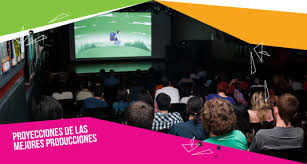
Some tips:
Recognize the room on a personal level. Personally assess if the promised conditions, in case of being a place that is used for the first time, are consistent with reality and really respond to what we need. The vision of the person who lends or rents the place is not always the same or knows our needs with precision. The day of the meeting-exhibition be a time before. In case of unforeseen events, we have a time in favor that can allow us to make adjustments and corrections. The film to be exhibited must be at the door. In other words, with the subtitles set, in the original language and stopped at the exact beginning of the first presentation frame. Minutes before starting the exhibition, check what is relevant to the projection.
Projection
We must bear in mind something important: For all participants, the experience must be pleasant. As we are working with the cinema, the projection must be as close to the cinema as possible, that is to say that of a movie theater.
Achieve total blackout
Ventilation or air conditioning according to the climate
Comfortable and sufficient seats
The room must be protected from external sounds and noises, at the same
Sound, diaphanous, adjusted to a volume proportional to the number of inhabitants in the room, this means that the sound adjustment must be made with the projection already started.
Focus on screen adjustment (critical focus).
Happily today we have a technology that is more widely used in its availability, such as multimedia projectors that bring the experience closer to the cinema screen, away from the television format






